2014
Harvest
2014
Harvest
Tuscany
The winter was exceptionally mild and rainy. As the temperature at the beginning of the springtime was higher than usual, the vegetative phase and the budding phase of the vines started early. There was a lot of rain at the end of the springtime with a low temperature so that the cycle of the vines became longer. The temperature was generally mild in July and in August with quite a few rains (source: Assoenologi). Please find further details regarding the different Tuscan zones as follows.
SAN PANCRAZIO (Province of Florence): The vegetative phase of vines started early, but then the cycle got longer due to the rains and cool weather in June and in July. Luckily it rained less in San Pancrazio in comparison to the neighbouring areas and there was no hail. The weather in September improved before the harvest.
Riccardo Galli agronomist-oenologist of Fattoria di Lucignano (Chianti Colli Fiorentini DOCG): ”..this was a difficult harvest as in the rest of Tuscany, although Lucignano can be considered as a lucky area in comparison to the areas around it, as it rained much less and there was less hail. As the weather improved in September, we could wait for the phenolic ripening of the grapes to be complete. The grape yield was above average. We started picking during the last week of September and we finished during the first week of October..We still have to rack off the wines, but this is a vintage where the wines will be elegant rather than powerful….”
MONTI IN CHIANTI (Province of Siena): The vegetative cycle of the vines started early, but then it got longer due to the cool and rainy weather during the summer. Luckily the harvest took place with good and sunny weather.
Sandro Sderci owner of Il Palazzino (Chianti Classico DOCG, Vin Santo del Chianti DOC, Toscana IGT):”..luckily the grapes were beautiful and flawless at harvest, with a good sugar content. We obtained this with a lot of work, as we are certified organic. We did not have Peronospora, and we managed to control Oidium. We controlled the grape berry moth (Clysia ambiguella) with Bacillus Thuringensis (this bacteria, harmless for humans, kills the larvae of insects with a toxin). We luckily did not have problems with the terrible Drosophila suzukii (an Asian fly of the Diptera order, a so called “alien species” new to Tuscany, that causes acid rot in the grapes) that has caused a lot of problems in this area. This was probably due to the fact that we drastically deleafed the vines, so that there weren’t the conditions for the development of this fly. Furthermore, it was luckily cool at night…I am satisfied with the outcome of the harvest, we still have to rack off the wines, but our wines will be elegant, fruity and pleasant to drink. This year we will produce Chianti Classico Argenina and Rosso del Palazzino, but we will not produce Grosso Sanese…”
GAIOLE IN CHIANTI (Province of Siena): The winter was mild and rainy. On the 30th of May there was hail, but luckily the vines started vegetating immediately so that there was no damage. In June and July the weather was cool. In August it was rainy. Luckily the weather in September was good and warm.
Saverio Basagni owner of Monterotondo (Chianti Classico DOCG, Toscana IGT Rosato)”…I am very satisfied with the grape yield and with the quality. We started picking on the 6th of October and we finished on the 11th of October. The alcohol strength of the wines is good, the colour is good, the nose has a lovely fruitiness. We will be able to evaluate the structure of the wines after the malo-lactic fermentation has taken place. This year we sprayed a vineyard of one hectare only with propoli (Azienda Agricola Monterotondo is certified organic): we had an excellent result. We vinified the grapes separately and I must say that this vat was the best….”
MONTALCINO (Province of Siena): The winter was mild, without snow. There were some cold spells. The vegetative cycle of the vines started early. It was warm in May, June and July were cool with rain. Luckily the weather was good and very warm during the harvest.
Andrea Cortonesi owner of Azienda Agricola Uccelliera (Brunello di Montalcino DOCG, Rosso di Montalcino DOC, Toscana IGT): “…the harvest this year lasted for two weeks instead of one week as usual. We had to go through the vineyards a few times, carefully monitoring the ripeness and the health status of the clusters. Due to the climate, there was a lot of vegetation, so that we had to carefully control the canopy. This is a vintage that required a lot of physical, mental and economic effort. The wines have a good alcoholic strength, although it is slightly lower than the previous vintages, but the nose is excellent, with notes of red fruit, raspberry, strawberry. We still have to rack off the wines: we will have a better idea then………”
Laura Brunelli owner of Le Chiuse di Sotto (Brunello di Montalcino DOCG, Rosso di Montalcino DOC, Toscana IGT):”..in April the weather was a bit colder so that the flowering phase of the vines started later. The fruit setting phase was normal. The clusters were extremely healthy, we worked very well in the vineyard. The state of the canopy of the vines was very good. We selected the clusters very much before and during the harvest, eliminating the clusters that were not perfectly ripe. This year the final grape yield was very low: 4-4.5 tons/hectare. We still haven’t finished racking off the wine (16th of October). We only vinified the best grapes. The vinification went very well, but we are waiting for the wines to finish the malo-lactic fermentation before we can express a more precise opinion, especially on the structure of the wines. We are keeping the vats at a temperature of 30 degrees Celsius in order to make the malo-lactic fermentation start up. The wines are clean, with intense aromatics and a good alcoholic strength. This year we were lucky as we were not hit by hail and the very good drainage that Gianni (Laura’s husband who unfortunately passed away)built in the vineyards protected the vines (the water did not stagnate in the soil). We are a small estate, we have 6.5 hectares of vines, so that the health of our vines is extremely important. We carried out a lot of agronomic work in the vineyard, we gave oxygen to the vines by tilling the soil on the rows of vines. It is extremely important for the vines to be well balanced. We always follow the vinification very closely, but this year we followed it even more carefully: Adriano Brunelli (our oenologist and a relative) was constantly in the cellar carrying out two pumping over of the must daily….”
S. GIMIGNANO (Province of Siena): The winter was mild and rainy. It rained during the springtime and during the summer. Luckily the weather in September and in October was good.
Matteo Troiani son of Franco, owner of Azienda Agricola Fontaleoni (Vernaccia di S. Gimignano DOCG, Chianti Colli Senesi DOCG, Chianti DOCG): “…we picked from the 5th of September till the 12th of October. It was a very demanding harvest. We went through the vineyards a few times in order to pick only the ripe grapes and we carried out a strict selection. We worked a lot in the vineyards before the harvest: at the end of August/beginning of September we dropped fruit and we deleafed the vines. The grape yield and the grape/wine yield was higher than average. The alcoholic strength of the wines is slightly lower, but the aromatics are good. We will be able to evaluate the reds better after the malo- lactic fermentation that is starting now (22nd October)..We are satisfied with this harvest….”
CARMIGNANO (Province of Prato): The winter was mild and rainy. The budding phase of the vines started early in the springtime due to the high temperature, but the vegetative cycle then slowed down due to the temperature which got lower at the end of the springtime. There were rains in July and in August, but less than in other areas of Tuscany as this is a very protected zone. Luckily only a very small part of the area of Carmignano was affected by the storm that hit the province of Florence and of Prato on the 19th of September. Only a few of the estates of Carmignano were marginally damaged. On the whole there were no bad damages, in fact the grapes that were harvested after the 19t h of September were flawless. Furthermore, as the grapes in Carmignano ripen early, the major part of the clusters had already been picked before the storm.
Beppe Rigoli of Fattoria Ambra (Carmignano DOCG, Barco Reale DOC, Vin Santo di Carmignano DOC, Rosato di Carmignano DOC).”…this was certainly a difficult harvest, due to the very unusual climate of 2014. Luckily we follow very strict agronomic practices and this paid off! We keep the yield low with grass cover on the aisles between the rows of vines (the grass cover is “in competition”with the vines), we did not use fertilizer this year, we carried out a green harvest and we deleafed the vines in order to prevent mould and to make the berries ripen well. We started picking on the 4th of September, carefully selecting the clusters and going through the vineyards more than once so to pick only the ripe grapes. We also have a vibrating sorting table placed between the destemmer and the crusher, so that there was an additional selection. On the whole we are satisfied, although the grapes from the vineyards of Montalbiolo and of Elzana will go into the blend of our two non riserva Carmignano as we will not produce our two Riserva wines this year……”
MONTEPULCIANO (Province of Siena): The weather during the winter was mild and rainy; the rains ensured a good water supply and the mild temperature made the budding phase of the vines start approximately 10 days earlier. The temperature and the rains during the springtime were average so that the vines developed in an optimal way; during the delicate phases of flowering and fruit setting there was no rain so that the impollination of the vine flowers was excellent and there was no problem with undersized berries. The temperature was slightly below average in the summer and there was rain. The grapes completed ripening approximately 10 days later than average.
Jacopo Felici oenologist of Azienda Agricola Dei (Vino Nobile di Montepulciano DOCG, Rosso di Montepulciano DOC, Vin Santo di Montepulciano DOC, Toscana IGT): ”…the harvest started on the 16th of September and ended on the 15th of October. The sequence of the grape varieties that were picked was: Merlot, Malvasia Bianca, Grechetto, Sangiovese, Petit Verdot, Cabernet Sauvignon. The grapes showed a good technological and phenolic ripening. The grape yield was 6 tons/hectare. The Azienda Dei follows environment friendly practices in the vineyards: no chemical weed killers are used, only organic fertilizers are spread. In the cellar there is now a new grape reception line that includes: a belt for the manual selection of the clusters, destemmer, first selection of the berries with an automatic sorting belt, manual selection of the berries on a sorting table. The alcoholic strength of the musts is average, but not excessively high, the acidity is medium-high, the colour is excellent, intense and well expressed aromatics. The wines will surely be elegant, but not excessively powerful. All the wines have been produced, although we will decide whether to produce Vino Nobile Riserva Bossona once the vinification is finished. The alcoholic fermentation of the musts is carried out exclusively with indigenous yeasts. The 2014 vintage can be considered similar to 2005 and to 2013…”


